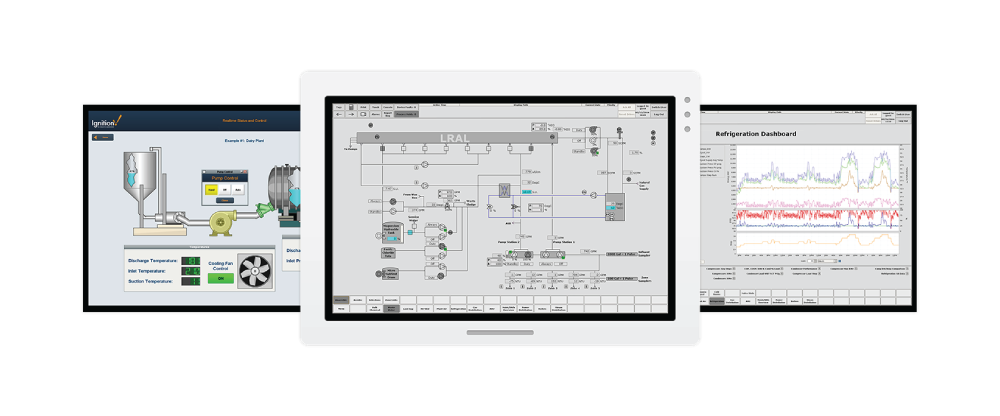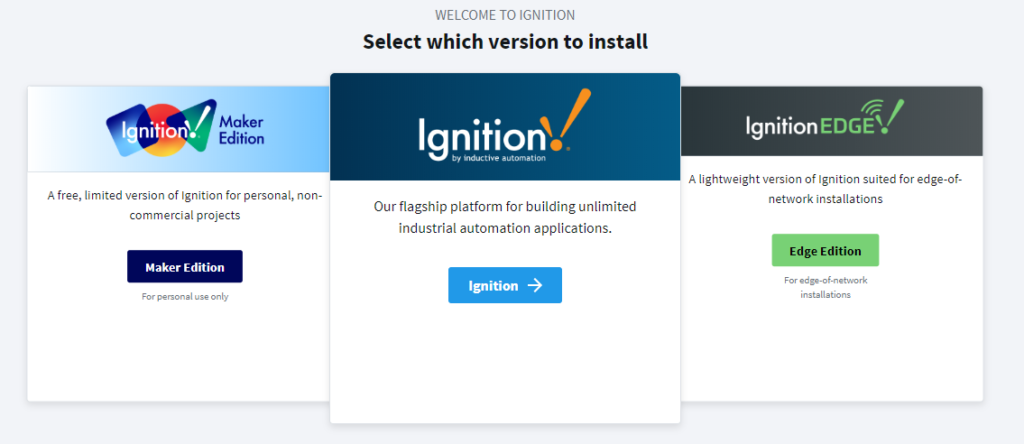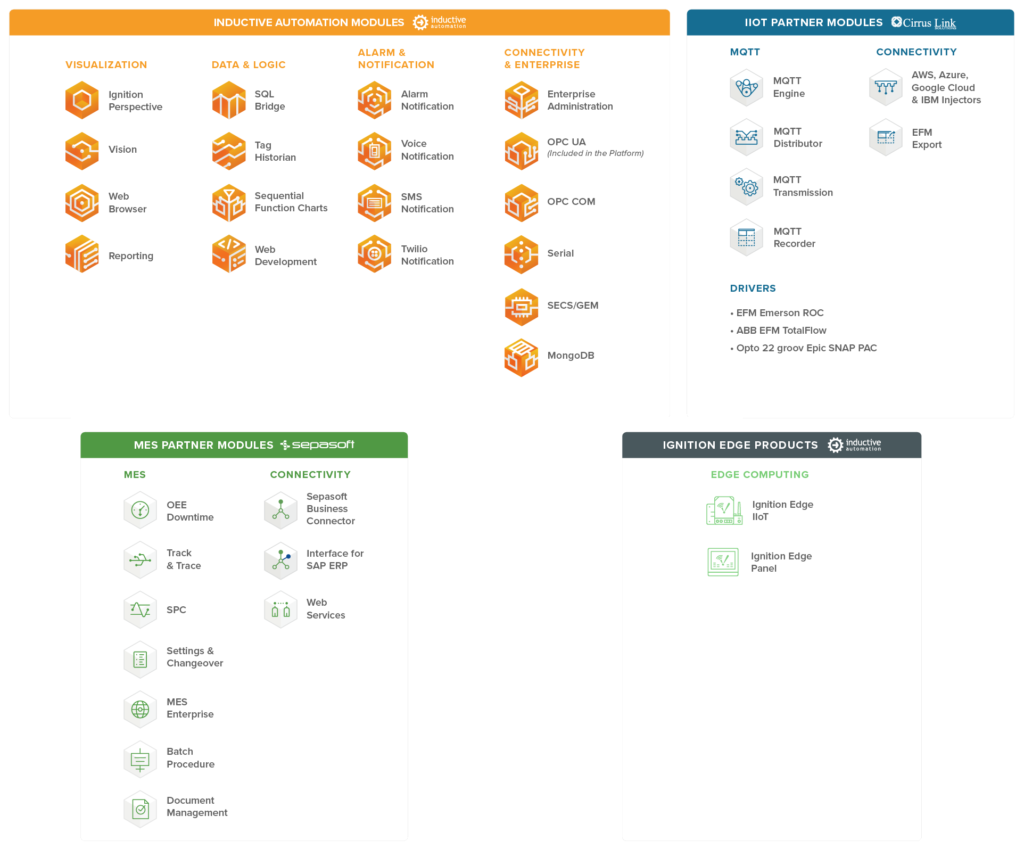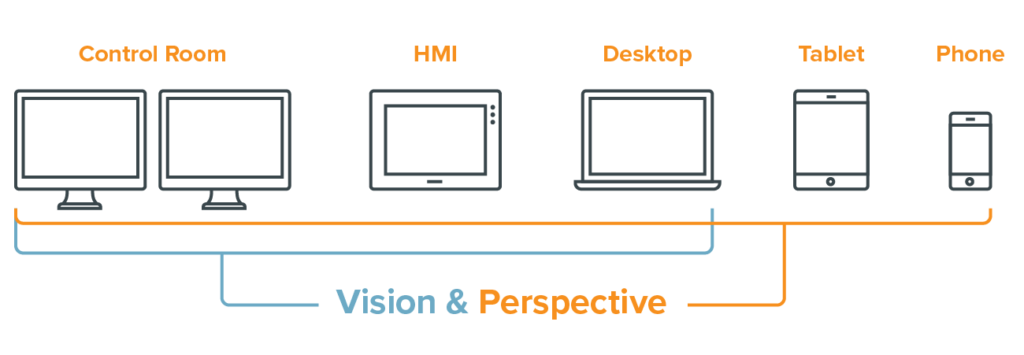The increasing demands posed by the rapidly developing industry leave no illusions regarding the choice of equipment and software. If we care about quality, we should choose proven and evolving products that solve current problems and address future needs. SCADA Ignition is currently a rapidly developing software in the market for creating systems that supervise production processes, visualize, alarm, and archive data. Inductive Automation’s software has dominated the market in the United States and has firmly established itself in Europe across almost every sector, from building management systems, production, and intralogistics to energy and drilling platforms. This is a product trusted by corporations such as Amazon, Shell, Johnson & Johnson, Coca-Cola, and General Dynamics.
SCADA Ignition – What’s worth knowing?

What is Ignition then?
It is SCADA software that combines a flexible, module-based licensing policy with an unlimited number of possibilities. Instant deployments over the network, a wide range of tools for supervision, display, and data collection combined with the use of an unlimited number of tags make this SCADA provide nearly limitless possibilities for controlling processes. The system is based on a universal and scalable platform.
SCADA Ignition allows communication with any PLC controller using a range of dedicated protocols. It can connect with Siemens, Allen-Bradley, or Omron devices either directly or using the built-in OPC-UA driver, which extends and standardizes the way information is exchanged.
Ignition is a centralized system, installed on a server that manages the entire application, with access from end devices occurring via a dedicated application (client launcher) or a browser. This approach shortens the program update time, as it only takes one click by the operator to download the latest visualization version from the server. One possible risk in such an architecture is the failure of the main device on which the system relies, which typically results in long downtime. This risk can be eliminated by using a redundant server that takes over control of the installation in the event of a main device failure.

Versatility
Currently, Ignition has three different editions, each tailored to a different application.
- Maker – the only completely free version of Ignition designed for simple and non-commercial solutions in building automation and smart home applications. The licensing terms restrict the use of the Maker edition to hobby projects only.
- Basic – the main version of Ignition, used for both small and medium-sized, as well as large SCADA applications where the developer needs the full capabilities of the environment. It serves as the starting point for building a fully scalable architecture. The Basic edition of Ignition allows for integrating PLC controllers, databases, and operator panels into a single network. When creating a larger application with a significant number of operator panels and controllers, an architecture can be established using two servers: one for collecting data from the controllers and the other for displaying information on the panels.
- Edge – a lighter version of the basic edition of Ignition, is most commonly used as a supporting element in more complex architectures, for instance, as a dedicated HMI panel. This edition was created with edge computing in mind, which involves storing, processing, and analyzing data as close as possible to the devices and systems that generate it. This approach reduces the amount of data transmission and enables faster operation due to low latency, making it a perfect match for technologies used in IIoT (Industrial Internet of Things).
- Cloud –this version was created in response to the growing demand for using the Ignition server in a cloud environment. By choosing this version, we delegate all the work related to maintaining servers and network infrastructure to solutions such as AWS (Amazon Web Services) or Microsoft Azure. The Cloud edition is ideal for hybrid solutions, combining the reliability of the standard edition with immense computational and storage power. By moving SCADA Ignition to the cloud, we gain access to powerful tools provided by technology giants like Amazon and Microsoft, including machine learning and ultra-fast servers.

Modularity
We have already introduced all versions of Ignition and decided on the optimal architecture for our network, so what’s next? We choose from an extensive list of modules only those that we need. The modularity of function packages is one way to reduce the costs of creating a system. Every project is different, and not all require the same functionalities. The creators of Ignition thought similarly and built the environment based on modules, allowing us to extend the functionality of the basic version.
Already in the basic Ignition module, we have access to an unlimited number of tags, an unlimited number of development workstations, a built-in SQL engine, OPC-UA, and many other communication protocols. The modularity in selecting functionalities for the final application allows for a flexible approach to the individual needs characteristic of each industry. A SCADA server designed for an intralogistics system requires different modules than one for process management systems.
Ignition modules allow us to extend a regular SCADA application and build a large environment that includes functions of MES (Manufacturing Execution System) and ERP (Enterprise Resource Planning) systems. By building a modular application in Ignition, we can replace several separate programs running alongside each other with a single integrated environment that collaborates on every level.

Classic or modern?
Regardless of how we answer the above question, SCADA Ignition offers two approaches to software development.
The first is the Vision module, which was created in a classic approach to visualization, supervision, and control of industrial processes. Vision works well on HMI panels or computers, both touchscreen and mouse-operated. The Vision module is a good choice when we want to use a proven solution and a classic approach. Working with Vision resembles that of other popular SCADA creation programs. Beginners find it straightforward, while experienced developers appreciate the interface clarity and the freedom in building system elements.
The second module is Perspective, which offers an innovative approach to software development, focusing on mobile devices and the browser as the primary display medium for applications. Perspective is the recommended module if we want to build applications for both Android and iOS mobile devices. Systems built on this module are responsive, meaning the visualization adjusts to the device’s screen resolution. Operators can adjust machine parameters on a tablet, for example, placed in a control cabinet, while maintenance personnel can monitor the entire facility’s status on various displays. Additionally, the system can be managed from a smartphone, which is always at hand. This flexibility is a significant advantage for quick response actions or simply for monitoring errors during maintenance.

Summary
The first step in choosing a SCADA system is understanding the challenges that modern industrial process supervision applications face. With this knowledge, we can select the right system for a specific installation. The creators of Ignition have developed an advanced SCADA environment that streamlines system deployment at every stage. As we stand at the crossroads of another revolution, potentially driven by AI and its industrial applications, it’s valuable to invest in an environment that evolves and stays current. The creators have proven this repeatedly through innovations like the Perspective module and the Cloud edition.
Ignition is flexible and doesn’t restrict developers to a single approach to application creation. Its wide range of functionalities allows for the implementation of various system components in a natural and transparent manner. Unfortunately, software from other vendors often lacks certain features, leading to challenges for developers when creating specific system components and potentially resulting in lower security levels.
The licensing model is simple and transparent. It doesn’t require contacting the manufacturer because everything you need to know is presented in a concise manner. The modern and responsive approach to building visualizations enhances the simplicity and speed of system development. One of the biggest advantages is the freedom to build architectures that work well in small factories as well as larger, geographically dispersed ones.
A good environment is a solid foundation for a good system, but the final outcome depends on the knowledge and experience of the designer and programmer. If you are considering implementing a SCADA solution, we warmly invite you to contact us.

